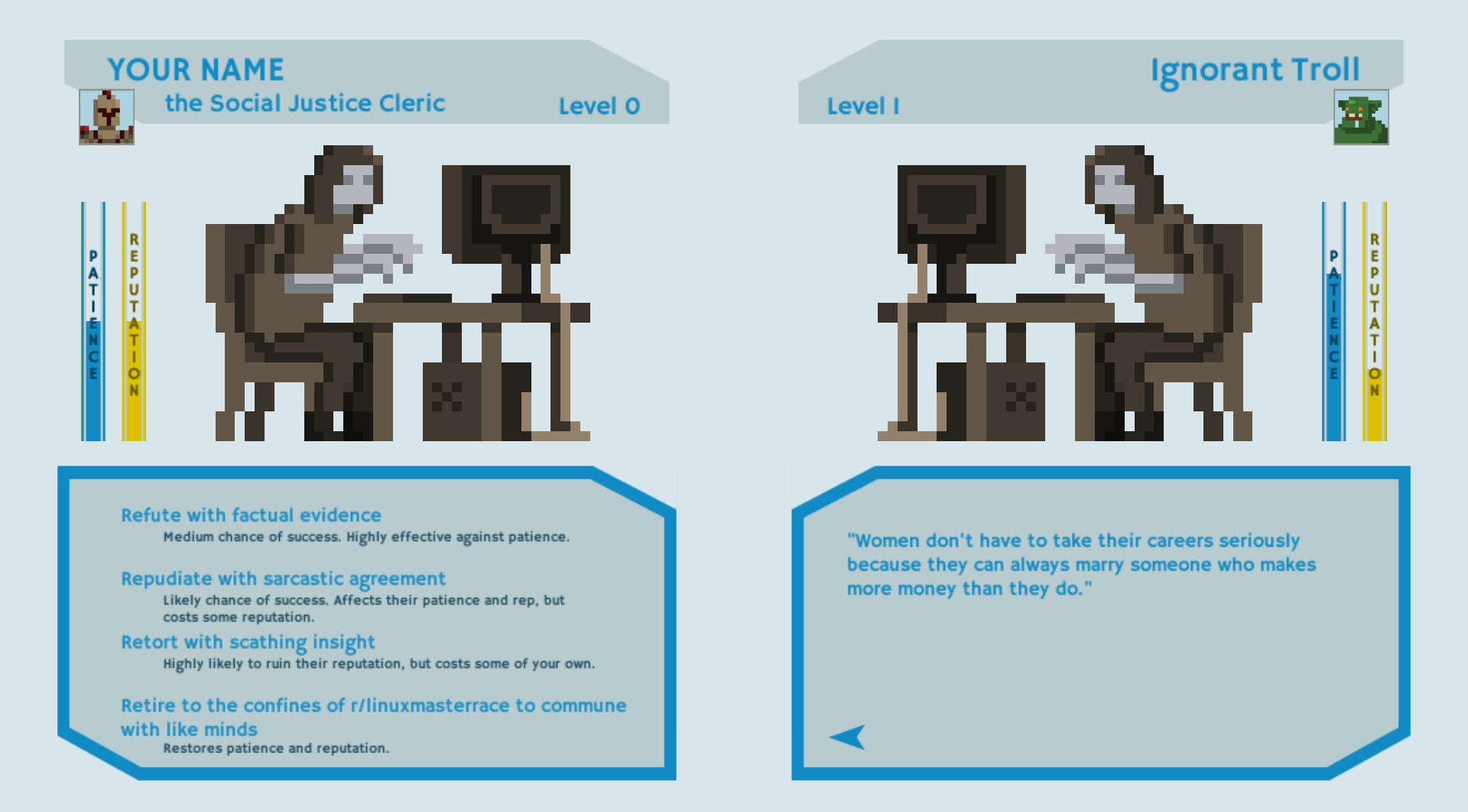Latest reviews
Wer Lost in translation mag der wird von On the rocks leider ein wenig enttäuscht sein. Stand im erstgenannten Film das Duo Coppola und Murray noch für einen sehr guten Film so wird dieses Niveau der Unterhaltung bei diesem Film nicht erreicht. Murray führt über weite Teile des Films Monologe und lässt seine Filmtochter Rashida Jones als lächelndes Beiwerk erscheinen. Schade, denn das kann Sofia Coppola besser. Oder aber meine Ansprüche sind gestiegen.
New York, New York
Mit sanfter, meist jazziger Musik wird ein New York gezeigt, welches es so wohl nur zu Corona-Zeiten zu sehen gibt denn es ist bemerkenswert wenig los auf den Straßen der Stadt. Außer Taxen und Fußgängern sieht man kaum anderen Verkehr in der ansonsten pulsierenden Millionenmetropole. Diese Szenen dienen aber meist nur als Beiwerk und sollen wohl die Stimmung im Film heben. Leider passt dieses surreale Bild der Stadt nicht zum Anspruch des Films.
Fazit
Kurzweilige 90 Minuten für alle Fans von Bill Murray oder diejenigen, die schön untermalte Bilder New Yorks mögen. Alle anderen können sich den Besuch im Kino oder das Abonnement von Apple TV+ ersparen.
Thanks to this extension I have easily developed the habit of checking what day it is in the metricated French Republican Calendar. The days can be looked up on Wikidata by French Republican month name and day number, and sometimes there will be an indication there of what the name of the day refers to (it would be nice if this were integrated into the extension itself). While it is appropriate for an extension for a French calendar to be in French, it would also be nice if it were more fully translated into English and other languages. This may be a personal plan since the extension is libre. Overall I think the extension does the job well, and I attribute a more botanical-centered mindfulness to it.
Der, mit 1141 Metern, höchste Berg im Harz ist das Ausflugsziel im südwestlichen Niedersachsen. Die Startpunkte für die Wanderungen zum Gipfel sind aus allen Richtungen mit dem öffentlichen Personennahverkehr als auch mit dem Individualverkehr sehr gut zu erreichen.
Die Harzer Wandernadel
An über 200 Orten im Harz kann man sich Stempel für das Sammelbuch der Harzer Wandernadel holen. Sollte man alle Stationen abgelaufen haben so hat man meiner Meinung nach auch den kompletten Harz gesehen und vor allem erwandert. Dabei kommt man auch auf Wegen entlang, die von dem üblichen Brockenwanderer gemieden oder gar nicht erst gefunden werden.
Wanderwege
Das Wegenetz des Harzes hat für alle Erfahrungsstufen etwas zu bieten. Ob es sich um einen absoluten Anfänger handelt, der nur zum Brocken möchte und auf dem Rückweg die Brockenbahn verwendet oder der erfahrene Fernwanderer, der sich auf einer der vielen Fernwanderrouten, die den Harz kreuzen, befindet.

Teil des Kaiserwegs im Harz
Klimatische Besonderheiten
Der Harz hat auf Grund seiner Lage auf klimatisch einiges zu bieten. Während es in den Tälern rund um den Brocken angenehmes Wetter haben kann sieht es auf dem Brocken oftmals ganz anders aus. Ohne wetterfeste Kleidung und entsprechendes Schuhwerk würde ich den Aufstieg nicht wagen. Zu überraschend kann das Wetter umkippen.

Das Brockenhaus im Nebel
Leider sieht man auch im Harz, wie es aktuell um die Wälder in Deutschland bestellt ist. Viele der Fichten stehen nur noch als Totholz in der Landschaft herum. Dem Borkenkäfer und dem Wetter der letzten Jahre sei dank. Aber es gibt auch Hoffnung. Der Wald im Naturschutzpark soll unter den neuesten Gesichtspunkten wieder aufgeforstet werden. Dabei wird die Fichte nicht mehr eine so dominante Rolle spielen wie es in der Zeit nach dem Zweiten Weltkrieg der Fall war.

Abgestorbene Fichten im Harz
Fazit
Der Harz ist für eine naturnahe Erholung auf jeden Fall eine Reise wert. Wer sich mit der reinen Natur nicht zufrieden geben möchte, dem sei die Seilbahn oder Baumwipfelpfad in Bad Harzburg empfohlen.Viele Wege sind stark frequentiert und bieten nicht jedermann eine Erholung. Dies sollte bei der Planung des Ausflugs berücksichtigt werden.
Auf Kickstarter haben Ron Gilbert und Gary Winnick Geld für die Idee gesammelt, ein Adventurespiel im Stil von Maniac Mansion und Monkey Island zu programmieren. Auch ich habe diese Idee finaziell unterstützt und nach Abschluss der Kampagne regelrecht dem Veröffentlichungstermin entgegengefiebert.
Benutze Gegenstand mit…
Durch einfache Sätze, die im Interface mit der Maus zusammengeklickt werden, veranlasst man die Spielfigur dazu, gewisse Handlungen zu unternehmen. Dies gelingt nicht immer, wie der wohl berühmt-berüchtigte Satz Benutze Hamster mit Mikrowelle aus Maniac Mansion verdeutlicht. Die Grafik ist an die Stil der alten Spiele angelegt und nicht auf dem neuesten Stand der Technik zum Erscheinungszeitraum des Spiels. Die Stimmung erzeugen die Story und die sich ergebenden Dialge der Figuren. Hier ist der gewohnte Witz der alten Spiele gut portiert worden. Das Wechseln zwischen den FBI-Agenten Angela Ray und Antonio Reyes erinnert an Maniac Mansion und schafft ein bisschen mehr Abwechslung im Spiel.
Innerhalb der fortlaufenden Geschichte des Spiels trifft man auf skurrile Personen und seltsame Ort. Genau so wie man es von den Entwicklern gewohnt ist. Ich möchte hier nicht all zu viel zur Geschichte verraten, nur so viel:
Warnung: Der untenstehende Text enthält Spoiler.
In der Mikrowelle befindet sich ein Hamster, die fleischfressende Pflanze kann bewundert werden und eine Kettensäge mit Benzin ist ebenso vorhanden wie eine Nasenbrille oder der Kopf des Navigators. Wer nicht weiß wovon ich rede sollte unbedingt Maniac Mansion, Zak McKracken und Monkey Island spielen. Es lohnt sich. Wirklich.
Da ich schon vor dem Erscheinen des Spiels zu den Unterstützern gehörte waren mir die Kritiken erstmal nicht so wichtig. Ich habe voll und ganz darauf vertraut, das von den Autoren ein großartiges Adventure abgeliefert wird. Und ich wurde nicht enttäuscht. Grafik und Sound sind eine Hommage an das Jahr der Handlung im Spiel, 1987.
Durch die vielen Anspielungen im Spiel (s. Spoiler) entdeckt man viele kleine EasterEggs, die den sowieso schon hohen Spielspaß noch einmal erhöhen. Auch wer keine Verbindungen zu den alten Spielen herstellen kann wird an diesem Spiele seine helle Freude haben.
Wie viele andere Bücher von Ken Follet auch überwältig einen die schiere Anzahl an Seiten, noch bevor man mit dem Lesen des Buches begonnen hat. Mit jeweils über 1000 Seiten bei dritten Teilen erwarten einen einige Lesestunden. Aber diese Zeit ist meiner Meinung nach sehr gut investiert.
Die Bücher des Autors zeichnen sich allesamt durch eine sehr gute Recherche aus und auch Sturz der Titanen macht hier keine Ausnahme. Die fiktive Geschichte mehrerer Familien in verschiedenen Ländern wird in der Zeit vor dem Ersten Weltkrieg eingebunden und spannend erzählt.
Wie erlebten die Personen die Zeit vor dem Ersten Weltkrieg? Wie verlief der Krieg aus Sicht der Familien? Und wie ging es danach weiter? Die fiktiven Erlebnisse der Romanfiguren aus drei verschiedenen Ländern sind in die realen Ereignisse der Zeit sehr gut eingebunden und geben einen eindrucksvollen Ablauf der Geschichte. Neben dem Ersten Weltkrieg werden zwei weitere, wichtige Themen des beginnenden JAhrhundert gekonnt in den Handlungsstrang eingearbeitet: die Rechte der Frauen und die beginnenden sozialistische Revolution in Russland. Dies alleine sind schon Themen, über die sehr viele Bücher geschrieben worden sind. Durch die Zusammenfassung in einem Buch ist von Anfang eine epische Breite erkennbar.
Ken Follet meistert mit dem Auftakt der Jahrhundert-Saga wieder einmal den Spagat zwischen Geschichtserzählung und Roman. Dieser Roman ist gut gelungen, macht Spaß auf die weiteren Teile und gibt die Geschichte der Katastrophe in Europa am Anfang des 20. Jahrhunderts gut wieder.
Der Laden
Im Bull’s Kitchen ist vieles wie in den anderen Burgerläden dieser Zeit. Es wird am Tresen bestellt, man bekommt ein Ufo zur Benachrichtigung und die Einrichtung ist modern und ein bisschen auf Fabrikhalle getrimmt. Oder zumindest so wie sich viele das Industriehallendesign vorstellen. Mir hat es gefallen. Kostenloses WLAN inklusive. Aber man ist ja nicht zum Surfen hier. ;)

Logo des Bull’s Kitchen in Hannover
Die Burger
Die Speisekarte ist übersichtlich klein - ein Umstand den ich sehr begrüße und daher nicht in die Verlegenheit komme etwas auszusuchen was wohl nur angeboten wird weil es ein Must-Have ist. Die Wahl fiel auf den Cheese Burner und den Tam Çoban. Beim ersten Burger spricht der Name für sich. Ein sehr gut gewürzter Cheeseburger. Beim Zweiten müsste man schon erweiterte Fremdsprachenkenntnisse haben. Aber ein Blick auf die Karte hilft: Lamm, Weichkäse und karamellisierte Zwiebeln in einem Vollkornbrötchen. Dazu kamen Süßkartoffelpommes und die obligatorische Fritz-Kola im Menü. Das Fleisch kann man Medium oder durchgebraten bestellen. So bekommt jeder das Fleisch so, wie er es mag. Und das Fleisch ist im Bull’s Kitchen sehr gut. Ebenso wie der Rest zwischen den Brötchenhälften. Diese werden innen kurz angeröstet und mit Öl beträufelt damit es nicht so labberig durch die Soße wird. Und auch die anderen Zutaten sind erstklassig.

Tam Çoban Burger im Bull’s Kitchen in Hannover
Fazit: 4 von 5 Sternen
Aber warum keine 5 Sterne? Die sehr reservierte Bedienung an der Kasse inklusive Empfang und Ansprache kann man verbessern denn dann klappt es auch mit der Bestnote.
In contrast with time travel adventures, the genre of alternate history tells stories set in timelines that have already been altered. So, someone or something prevented Adolf Hitler from being born—now what? The most well-written alternative histories can deepen our understanding of real history, by re-examining the causes and effects that made our world what it is.
The Way It Wasn’t is a 1996 anthology edited by Martin Greenberg that assembles thirteen short stories of varying quality. There are only three that stood out to me as good or excellent:
-
Robert Silverberg’s “Lion Time in Timbuctoo”, an adventure set in a world where the Black Death was far deadlier than in ours, and different empires are struggling for power. Silverberg previously invented this alternative timeline in a novel called The Gate of Worlds, and Lion Time itself is short on worldbuilding and history, but it’s still a fun tale once it gets going.
-
Pamela Sargent’s “The Sleeping Serpent”, which describes an encounter between Mongols and Iroquois, in a timeline in which the Mongols are controlling continental Europe. Sargent has written a 700-page tome novel about Genghis Khan (Ruler of the Sky), and the quality of this story reflects her scholarship.
-
Kim Stanley Robinson’s “Lucky Strike”, which is about the morality of the use of nuclear weapons—and whether the decisions of individuals can make a difference.
Three stories are about US presidents—”Ike at the Mike”, which imagines a music career for Dwight Eisenhower; “Over There”, in which Theodore Roosevelt gets his wish for a final World War I adventure with the “Rough Riders”; “The Winterberry”, in which JFK is not dead, but no longer the man he was. These stories are more about presidents as celebrities and myths than about their real lives or the consequences of their actions, and I found them wholly unnecessary (“Ike at the Mike” was execrable).
If you find this book in the bargain bin, you’re likely to enjoy some of the stories, but given the hit-or-miss quality of the selection, I would suggest seeking out the highlights above instead of buying the anthology.
A 576-page novel about a fictional British rock band trying to make its way to international stardom in the late 1960s? That really doesn’t sound like my cup of tea—but this one was written by one of my favorite authors, David Mitchell (Cloud Atlas, The Bone Clocks), so it was an instant purchase for me.
Utopia Avenue tells the story of the eponymous band from the perspective of its members—Dean Moss, Elf Holloway, Jasper de Zoet, Peter “Griff” Griffin—and their manager, Levon Frankland. Each chapter is named for one of the band’s songs and focuses on one of the main characters. (To promote the book, Penguin created a PDF with complete lyrics written by Mitchell for several of the songs, attributed to Utopia Avenue’s songwriters. Actually singing them might prove challenging!)
The book does not overplay the rags-to-riches angle of a band struggling towards success. Instead, it focuses especially on Dean, Elf, and Jasper, whose different class backgrounds and personal struggles (with sexual identity, with mental health, with discrimination, with estranged family, with grief) elevate the book beyond its colorful setting.
Astute Mitchell readers will recognize Jasper’s last name from The Thousand Autumns of Jacob de Zoet, which is about the adventures of Jasper’s great-great-great grandfather. Jasper’s story intersects with the supernatural elements of the Mitchellverse, but this is only one thread among many, and Utopia Avenue stands entirely on its own.
Nonetheless, it’s par for the course for Mitchell to include plenty of references to prior works, and he does so with gusto, including a significant role for Luisa Rey, the Spyglass writer from Cloud Atlas (unforgettably portrayed by Halle Berry in the 2012 movie).
Cartoon celebrities
What’s more unusual is that Utopia Avenue is chock-full of real-world cameos, from David Bowie to John Lennon, from Jimi Hendrix to Leonard Cohen. Mitchell tries to make these encounters brief and memorable, but some readers will find the portrayal of these (in some cases recently) deceased celebrities jarring and cartoonish.
Mitchell might agree. He loves playing with the contrast between the serious and the farcical, the exaggerated and the real. Compare Cloud Atlas: Is Luisa Rey the character of a mystery novel inside the novel, or a fictionalized Karen Silkwood? The world of Utopia Avenue is the same one in which writer Dermot Hoggins throws book critic Felix Finch off a twelfth floor balcony.
I enjoyed the celebrity cameos without taking them too seriously. I love that some readers have compiled playlists on Spotify and on YouTube of the many works referenced in Utopia Avenue. Clearly, these readers felt transported by the book—not to the historical 1960s, but to an imagined place and time. In Mitchell’s own words, he evokes lacunae, just like when Dean Moss discovers a hidden church while wandering Rome:
In memory and in dream, he’d revisit this lacuna in time and in space. The place was a part of him now. Every lifetime, every spin of the wheel, holds a few such lacunae. A jetty by an estuary, a single bed under a skylight, a bandstand in a twilit park, a hidden church in a hidden square. The candles at the altar did not burn out. (p. 330)
Utopia Avenue is bright and stylish; it plays with plenty of tropes and stereotypes (sometimes to its detriment), but does not neglect the inner lives of its characters. If you’re new to Mitchell and the subject-matter does not appeal to you, you may want to sample his other works first—The Bone Clocks is fantastical and accessible; Cloud Atlas is masterful and deeply moving; Ghostwritten and number9dream are showy and experimental; Slade House is short and creepy; Thousand Autumns is an adventure in a different time; Black Swan Green is evocative and wondrous, a personal favorite.
The Taiping Rebellion raged in China from 1850 to 1864. It was a civil war (overlapping with America’s) in which 20-30 million human beings or more lost their lives. The Taiping sought to overthrow the Qing dynasty and establish a Christian theocracy in its place. Their leader, Hong Xiuquan, proclaimed that he was Jesus Christ’s brother (presumably not that one). Where the Taiping ruled, the temples and “false idols” of Buddhism, Confucianism, Taoism, and other ancient beliefs were often smashed to pieces.
In Autumn in the Heavenly Kingdom (2012), historian Stephen Platt retells the story of the rebellion and Western involvement in the conflict. After setting the stage with several maps, a timeline, and dramatis personae, Platt centers the experiences of memorable and colorful characters like Hong Rengan (the Taiping Prime Minister who envisioned Western-style reforms in China), Zeng Guofan (an imperial scholar-general who employed exceptional brutality to suppress the rebellion), and Frederick Townsend Ward (an American soldier of fortune who helped fight the Taiping).
A dynasty on its knees
After the First Opium War (1839-1842), the ruling Qing dynasty was near collapse. The overtaxed peasantry and gentry flocked to the Taiping in droves. Due to their Christianity-inspired and pro-Western ideology, they also had Western supporters, especially in the missionary community which hoped to help “correct” the group’s more idiosyncratic teachings. But along the way, Britain picked the side of the Qing dynasty, helping bring about the end of the rebellion.
When a Taiping force reached Shanghai (one of the treaty ports opened to foreign trade by force) in 1860, Taiping commander Li Xiucheng sent an advance letter assuring the foreigners in the city that the Taiping wanted positive trade relations, and that no foreigner would come to harm. Britain’s trade representative Frederick Bruce refused to even open the letter. Instead, British and French forces helped repel the Taiping forces from Shanghai—while simultaneously waging a Second Opium War against the Qing dynasty which culminated in the destruction of the Imperial Summer Palace in Beijing.

Reconstruction of the Imperial Summer Palace in Beijing, which was looted and destroyed by Anglo-French forces in the Second Opium War. (Credit: Guo Daiheng / Beijing Re-Yuanmingyuan Company Limited. Fair use.)
Gunboats and mercenaries
Britain continued to strenuously assert its neutrality in China’s civil war, but the intervention in Shanghai marked the beginning of increasingly active efforts to help suppress the Taiping: by imposing conditions on their military movements, by selling arms to the Qing empire (including an aborted attempt to sell China’s rulers a small fleet of gunboats known as the “Vampire Fleet”) , and through support for Frederick Ward’s mercenary force, the “Ever Victorious Army”, which would come to be led by a Brit, Major Charles “Chinese” Gordon.
The Qing dynasty lasted until 1912. Would the empire have defeated the Taiping without Western help? If not, would Hong Rengan’s vision of a peaceful, modern China have prevailed—or would Hong Xiuquan have led an increasingly fanatical theocracy, worse in its oppression than the rulers it sought to displace?
While Platt’s narrative is sympathetic to the Taiping (as is modern China, which has sometimes portrayed them as proto-Communists), he does not attempt to answer those questions. Instead, Autumn in the Heavenly Kingdom, together with its “prequel” about the First Opium War, Imperial Twilight (reviews), helps us understand the wounds of colonialism and the human cost of empire in all its forms. It may also provide clues to modern China’s obsession with totalitarian political control.
The verdict
As in Imperial Twilight, Platt succeeds marvelously in making this history engaging, at the expense of attempting to chart out the larger patterns of the conflict (e.g., the economic impact of the First Opium War on the Qing dynasty, the ideological development of the Taiping, the volume of arms sales). Like Imperial Twilight, I recommend Autumn in the Heavenly Kingdom unreservedly as a starting point to explore the history of China in the 19th century.
The game makes you a literal Social Justice Warrior fighting trolls on the internet. The art style and music come together nicely to to feel like an 8 bit adventure game.

Social Justice Warriors gameplay (Own work. License: CC-BY-SA.)
Gameplay
The game is fairly simple, you choose 1 of 4 characters with unique attacks to fight trolls. Every time you attack, you’ll see lines from the trolls like “Women don’t have to take their careers seriously because they can always marry someone who makes more money than they do”. You fight trolls until someones reputation or patience reaches 0. The game feels fresh for the first 15 minutes until you’ve seen all the troll lines, stooped to using attacks that hurt your reputation and tried all the characters.
Verdict
Game has a cute theme, but gameplay quickly becomes boring. There’s also nothing notable about the message, fighting trolls on the internet is futile wasn’t even insightful in 2014 when the game was released. This game may have worked well as a short video instead.
